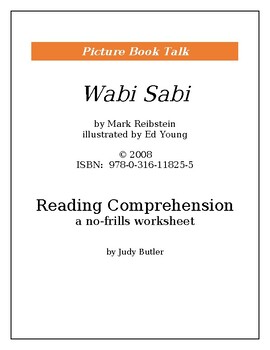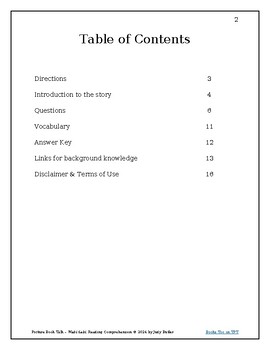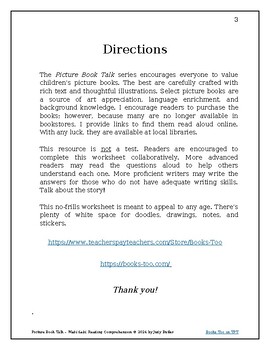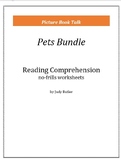Wabi Sabi: Reading Comprehension
- Word Document File
Also included in
- This bundle features pets.A story of three lambs teaches readers about turning wool into colorful yarn that’s woven into a beautiful tapestry. Richie’s dog, Jake, loves sound and introduces readers to a philharmonic orchestra. Wabi Sabi discovers an ancient Japanese philosophy and shares this enlighPrice $4.50Original Price $6.25Save $1.75
Description
Wabi Sabi by Mark Reibstein is a skillful tale about “a way of seeing the world that is at the heart of Japanese culture”. The main character is a cat named Wabi Sabi. This is the story of her journey to learn the meaning of her name. It’s written with both prose and haiku—in “the haibun form, where short prose passages set up each haiku.” Reibstein provides backmatter and translations of 14 Japanese haiku that appear throughout the book.
The collage art by Ed Young is exceptional. His illustrations are wabi sabi artworks; unfortunately, they lose a bit of their potency on the flat page. Many thanks to BooksVideosTV for introducing us to Young, his art, and specifically, an account of how he created art for this book. The older student and adult will benefit from reading Mark Mitchell’s blog for more information.
This magnificent book is read aloud by Read Aloud with Ms Caudle .
After reading wabi sabi: the japanese art of impermanence by Andrew Juniper, I interpreted Wabi Sabi’s journey as representing the tea ceremony. Juniper writes that participants in the tea ceremony “leave their petty world behind”, perhaps the city that Wabi Sabi passes through. He references “livid autumn colors of maple leaves”, which we see in Young’s illustrations. I now see the wise, old monkey as the tea master. “The perfect clarity of mind and seamless movements of the master evoke a hypnotic effect in the participants, who then can become one with the mind and spirit of the tea master.” (Juniper 40) After the tea ceremony, Wabi Sabi understands the meaning of her name.
A little research into haiku reveals controversy over how it’s taught requiring a specific syllable structure. The English haiku in Wabi Sabi all have the 5 – 7 – 5 syllable form. Translations of the Japanese haiku free readers from this structure and allow them to attend to on other aspects of the poetry.






